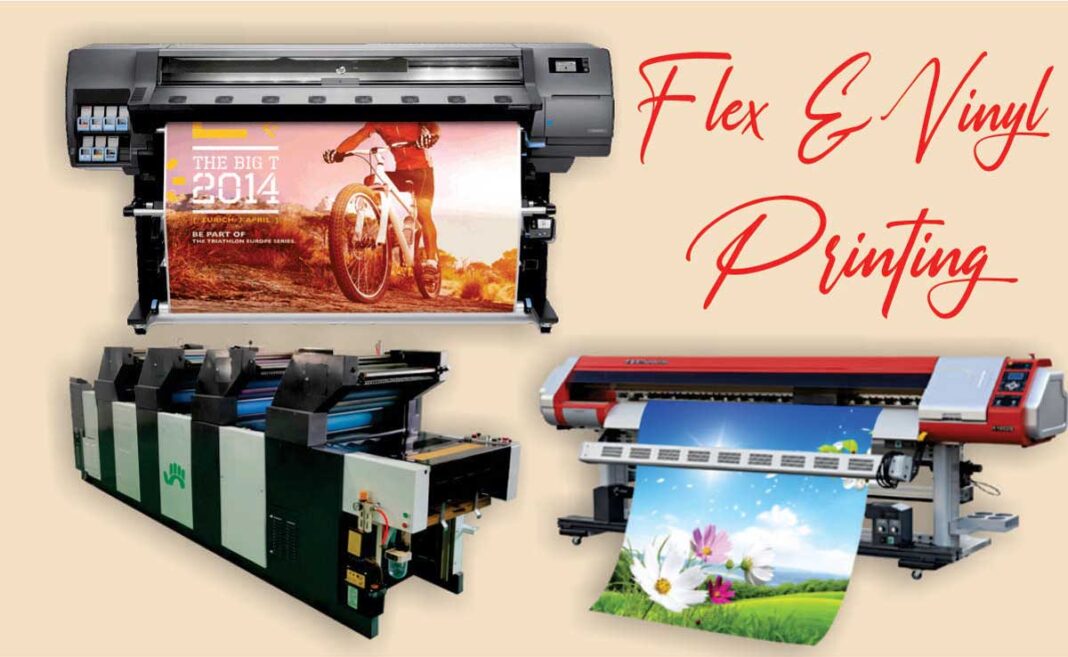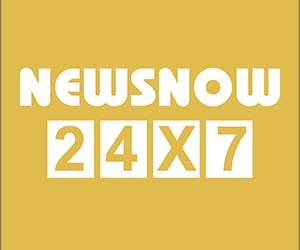The flex banner (flex printing banner) is basically used to shout your messages or product endorsement from the rooftops or the roadsides. … The flex banner is printed using solvent ink and therefore these banners are really cost-effective mediums of promoting.
In India recyclable flex is very new.
Basically, there are two Flex Printing categories
1. Normal flex–
cheapest and comes in two variety-white back and black back. The white back is mostly used in
backlit whereas black back(blackout) is used for outdoor branding as sun rays will not cross the flex so the hoardings iron frame will not visible.
2. Star media flex
Star Media Flex is a better option as quality is concerned comes in both variety black back and white back.
Used for long-duration events as it is much durable than normal flex.
There are 2 kinds of printing on flex:-
1. Solvent – this is the cheapest – usually used for distance viewing or outdoor advertising. This also leaves a solvent smell after print. The quality of printing is average
2. Eco-Solvent printing- This results in sharp and clear prints- which are used for viewing from a short distance. These kinds of prints are used for in-store displays, exhibitions, etc
Flex itself can be of various types and GSMs
Regular flex – This is thin and used with solvent print for outdoor advertising. This is also the cheapest -Flex Banner – Solvent Print on Regular Media.
Star flex – Glossy, 300+ GSM – quality, sharp printing – Flex Banner – Premium Eco-Solvent Print on STAR Media
There Exist Several types of Flexes that are being used in India. A few of them are listed below.
1. Normal Flex
2. Star Flex
3. Star Black Flex
4. Backlit Flex
5. Star Back Lit Flex
6. Eco-vinyl
7. Eco-solvent
8. One-way vision
Normal Flex is used at shops or in standees at events.
Star Flex is a Much higher quality Flex than Normal Flex which reflects the light and gives a luster Appearance when viewed.
Star Black FLex is the same as Star Flex, It’s Cheaper than Star Flex, although the prices on the market are the same for all the native people.
Back-Lit Flexes are used in Glow Sign Boards that are used in Nights for the Vision.
Flex printing – Frontlit & Backlit banners
Branding and outdoor advertisement in Delhi & NCR, branding relies heavily on front-lit and backlit flex printing. But flex printing is a generic term. People use it when they want to refer to the printing of banners, hoardings, shop boards, etc.
At Printing Destination we use solvent inks to reproduce images and client designs on rolls of PVC. These inks have a very high resistance to rain and sunlight. Further, the PVC rolls are reinforced with a cloth liner/denier from behind. This combination makes flex printed banners, absolutely ideal for outdoor applications.
Flex printed banners and hoarding are extremely cost-effective. You can source a large-sized banner for just a couple of hundred rupees. That is the reason why these banners are so ubiquitous. In Delhi, you’ll find flex posters and banners on just about every street corner and crossing.
At Printing Destination we have an extremely high quality 10.5 feet wide, high speed, Konika Machine. We reproduce client prints on rolls ranging in width from 3 to 10 feet. Hoardings larger than 10 feet in width, are broken into separate tiles and then seamed together. In the wide-format digital printing industry, there are mainly two types of outdoor prints: front-lit flex prints and backlit flex prints.
Backlit flex printing:
A lit signboard attracts customers. And this is exactly the function of a GSB – short for Glow Sign Board. A backlit flex print is illuminated from behind by tube lights. The print is stretched on a metal box frame of 6 – 8 inches thickness. The box contains tube lights that glow when switched on.
Further the backlit flex material allows light to pass through. The backlight glow adds an extra punch to the print. It makes the colors more vibrant. Thus, the print looks great during the day and absolutely fantastic when lit, at night. Glow sign board ( GSB ) applications typically include:
- Retail shop and showroom boards
- Signs which need high visibility at night
Backlit Flex printing is typically more expensive than front-lit banners and hoardings. Images are reproduced on the same at a much higher quality. These prints also have a longer life. By this, we mean that inks on backlit posters take much longer to fade in rain and sunlight.
Installing a glow sign board is recommended for a consumer products store that needs to entice prospective clients to walk in from the street. The beautifully illuminated glow sign helps differentiate one storefront in a street lined with numerous shops.
Frontlit flex printing costs
Frontlit flex prints are further divided into extremely low-cost 3 / 4 pass prints or 6 pass Star Flex prints. Star flex prints are made of a thicker material. The print quality on this material is far superior to the regular material. I have explained 3 / 4 / 6 pass printing in more detail, at the end of this section.
The price of flex printing depends on the head passes or resolution the image is reproduced at. The quality and thickness of the base material also affect the final cost.
Eco- Vinyl
Eco – Vinyl is a 100% eco-friendly, recyclable, PVC-free, paper-free pre- glued medium. This high-performance medium is light weighted and highly durable. Eco- Vinyl is compatible with all eco-solvent and UV cured inks. It is suitable for a wide range of signage applications like indoor displays, MT and GT branding, mounting on boards, vehicle wraps/ adverts, and point of sales displays.
Key specifications are 110gsm -thickness, 3, 4 & 5 feet -width, length -164 feet, and white in color. Like Eco-Flex, Eco- Vinyl is also free from pollution and odor, gives distortion-free high-resolution output, best printability, suitability for welding, sealing, taping, and gluing, and have high strength mechanical properties. Both media is compatible with any printer ranges and inks available in India.
Today’s green consumers are most concerned with issues such as reducing carbon footprint, waste management, and natural ingredients, which in turn mean consumers, are increasingly demanding greener values from retailers and brands. Eco-Flex and Eco- Vinyl address the demands of environmentally conscious customers and is remarkable innovation towards sustainability.
Eco-solvent
Vinyl is nowadays commonly used for printing both indoor and outdoor display banners. Vinyl is a thick, flexible, and portable material, it is also termed PVC. Vinyl can be printed in two ways solvent or eco-solvent. Eco-solvent vinyl printing provides photo-quality output. An extra shield of lamination has to be applied to the eco vinyl which can be gloss or matt lamination which adds not only to the life of the banner but also make the color bind. Normally vinyl has an average life span of more than 3 years.
The difference between normal vinyl and eco-solvent vinyl is mainly on the quality of the print. Eco-solvent is a biodegradable ink printing and is best suited for quality prints for events, exhibitions, or for pasting it on the wall of your workplace.
Where eco-solvent banner is used:
- Company logo
- Notice board or sign board of your company
- Special promotion
- Participation in events
- Inside a canopy or tent
- Exhibitions and conferences
- Team get together
- School fest and annual sports meet
- Indoor office displays
- Product presentation
Normal Vinyl or Eco-Solvent:
If you have to make a choice between whether you should go with the normal vinyl or eco-solvent, then the preferred choice though in any case indoor and outdoor is eco-solvent. But given the price point difference between both printing techniques, it is recommended that for indoor display material you should go with eco-solvent material which you can mount on some hard material like wood, or sun board, or plastic foam. For outdoor printing, as it will not be highly noticeable you can go with normal vinyl printing as well.
What does 3 / 4 / 6 pass flex printing mean?
A print shop while taking down your flex printing order will typically ask you how many passes print you want. We generally offer you a choice of 3 / 4 / 6 passes. As a thumb rule, the higher the number of passes, the costlier the print. Here is what those passes mean…
Throw your mind back to nursery or grade school. Our teachers used to give us an assignment wherein we had to write, overwrite, and overwrite the alphabet in a cursive writing book. While was supposed to help develop our writing skills, I’m sure you’ll remember that as we kept overwriting the letters, they kept getting darker / crisper.
This is exactly what multi-pass flex printing does. With each pass, an image is printed, overprinted, and further overprinted. Needless to say the more the passes the better print quality. Also with more passes, we lay down more layers of ink on the media. This means it takes longer for the inks to fade.
If you have a short-lived ad campaign with a tight budget, opt for a 3 / 4 pass print. The job will cost less and the prints will not fade for a few months to come. For applications where the life of the print needs to be more, we recommend that you go for a 6 pass or Star flex print.


